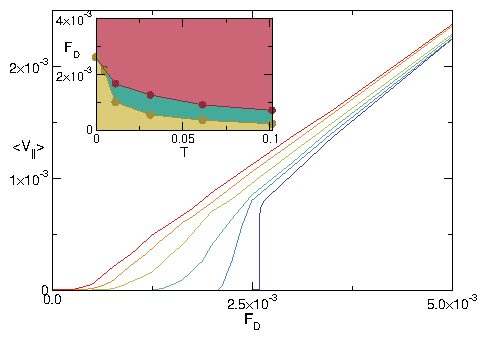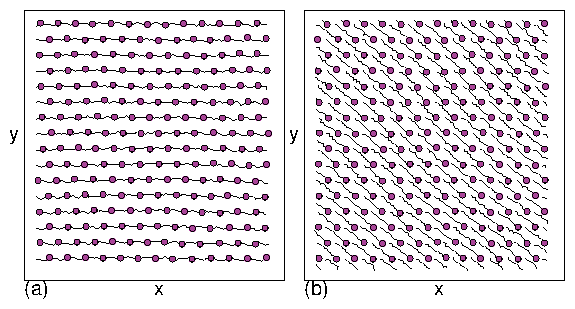 Figure 1: The time average skyrmion velocity in the direction parallel to the drive,
〈V||〉, vs FD
at temperatures
T = 0.0 (dark blue),
0.005 (light blue),
0.01125 (dark green),
0.03125 (light green),
0.06125 (orange),
and 0.1025 (red).
As T increases,
there is a decrease in the depinning threshold Fc and the behavior
of 〈V||〉
becomes increasingly nonlinear.
Inset: Dynamic phase diagram as a function of FD vs T
highlighting the pinned (yellow),
creep (green), and viscous flow (pink) regimes.
Figure 1: The time average skyrmion velocity in the direction parallel to the drive,
〈V||〉, vs FD
at temperatures
T = 0.0 (dark blue),
0.005 (light blue),
0.01125 (dark green),
0.03125 (light green),
0.06125 (orange),
and 0.1025 (red).
As T increases,
there is a decrease in the depinning threshold Fc and the behavior
of 〈V||〉
becomes increasingly nonlinear.
Inset: Dynamic phase diagram as a function of FD vs T
highlighting the pinned (yellow),
creep (green), and viscous flow (pink) regimes.
|

